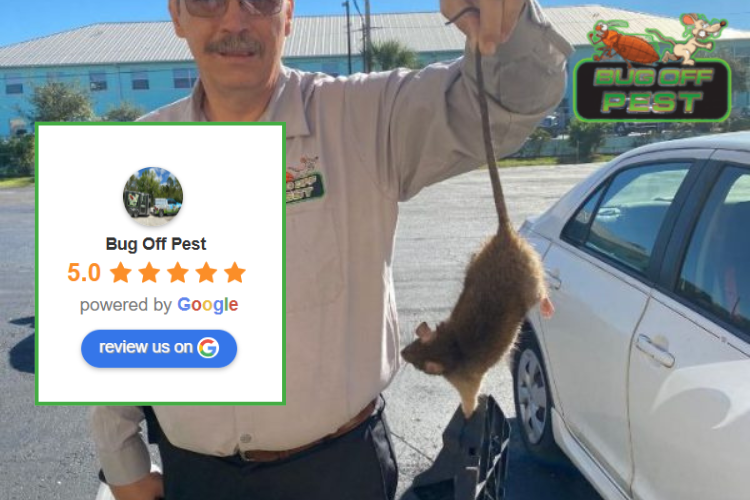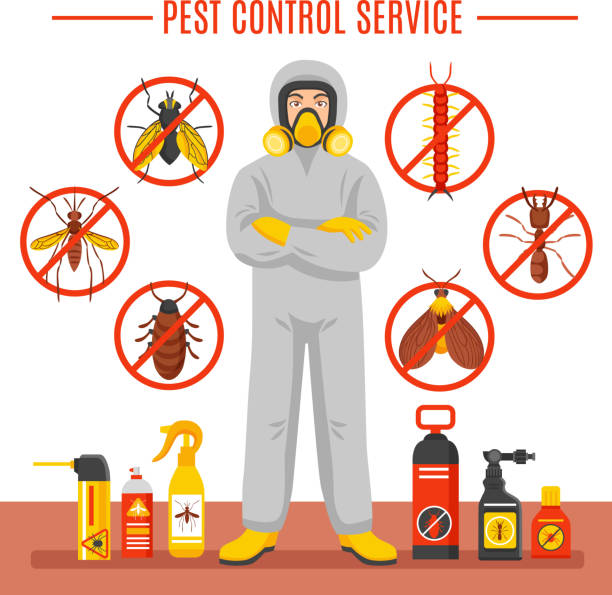Top Benefits of Termite Treatment Port Charlotte for Proactive Protection
Discover the most recent Advancements in Insect Control and Exactly How to Carry Out Efficient Treatment Solutions
In current years, the field of pest control has seen substantial advancements, driven by the demand for reliable and sustainable treatment solutions. Ingenious approaches such as Integrated Parasite Administration (IPM) incorporate environment-friendly exercise with advanced modern technology, enhancing both effectiveness and environmental duty. The combination of smart technologies and Do it yourself methods has equipped people to tackle pest issues a lot more effectively. As we explore these developments, it comes to be necessary to recognize how best to execute these approaches in different setups to achieve optimal results. The effects for parasite management practices might be transformative.
Eco-Friendly Parasite Control Options
In the last few years, the need for environment-friendly pest control options has risen as companies and house owners alike look for lasting alternatives to typical chemical therapies. This change is driven by expanding environmental awareness and a wish to lessen the health and wellness risks linked with artificial chemicals.

Environment-friendly pest control methods include a variety of methods that prioritize using all-natural compounds and techniques. Integrated Bug Monitoring (IPM) is one such method, integrating biological, social, and mechanical tactics to take care of parasite populations while lowering reliance on chemicals (Wildlife removal services). This holistic approach emphasizes avoidance with habitat control and the introduction of all-natural predators, thus promoting a well balanced community
Another popular option is making use of botanical chemicals stemmed from plants, which have a tendency to be less damaging to non-target organisms. Products like neem oil and diatomaceous planet have actually gained traction for their effectiveness in regulating pests while presenting very little threats to human wellness and the environment.
Additionally, exclusion techniques, such as sealing access points and keeping sanitation, play a vital function in eco-friendly parasite monitoring. By embracing these lasting practices, individuals and companies can efficiently manage pests while advertising a healthier world for future generations.
Smart Modern Technology in Bug Administration
Technology is reshaping the landscape of pest management, with wise innovation becoming an essential pressure in boosting efficiency and effectiveness - Wildlife removal services. The combination of Net of Things (IoT) tools, expert system (AI), and information analytics is transforming how parasite control specialists approach infestations
Smart traps outfitted with sensing units can spot parasite activity in real-time, sending instant informs to drivers. This permits timely feedbacks, decreasing damages and minimizing the demand for comprehensive treatments. In addition, AI algorithms evaluate historic data to forecast insect behavior, allowing positive treatments based upon ecological problems and problem patterns.
Drones and automated automobiles are also playing a substantial role in parasite monitoring, supplying aerial evaluations of big locations, determining hotspots, and even distributing targeted treatments. These innovations not only streamline procedures but also enhance safety by limiting human direct exposure to possibly unsafe chemicals.
Additionally, mobile applications encourage customers to check parasite activity and gain access to expert suggestions, fostering a collective strategy to pest monitoring. In general, the fostering of smart innovation is establishing a new criterion in bug control, emphasizing data-driven choices and lasting practices that inevitably benefit both experts and property owners alike.
Integrated Pest Management Strategies
Integrated Insect Monitoring pop over to this site (IPM) utilizes a holistic method to pest control, incorporating various strategies to effectively handle bug populaces while minimizing risks to human health and the environment. IPM rotates around understanding the pest life cycle, their all-natural enemies, and the community in which they prosper.
Among the basic parts of IPM is keeping an eye on pest populations via routine inspections and data collection. This permits for the recognition of parasite thresholds, figuring out when intervention is needed. Cultural methods, such as crop habitat, rotation, and cleanliness adjustment, are vital in reducing parasite prevalence and promoting plant health and wellness.
Mechanical controls, including obstacles and traps, are likewise crucial in IPM. These techniques can literally eliminate or deter parasites without using chemicals. When needed, the sensible application of chemical controls is employed, concentrating on targeted treatments that minimize ecological effect.
Education and collaboration among stakeholders, including farmers, insect control specialists, and the area, are important for the successful implementation of IPM methods. By prioritizing lasting practices, IPM not only addresses pest issues but likewise cultivates a much healthier ecological community.
Biological Control Techniques
Various organic control approaches are increasingly identified for their performance in handling bug populaces while advertising environmental equilibrium. These methods harness all-natural killers, parasites, and virus to decrease pest numbers without relying upon synthetic chemicals. The intro of ladybugs can successfully manage aphid populaces, while nematodes target soil-dwelling insect larvae.
Furthermore, the usage of microbial pesticides, such as Bacillus thuringiensis (Bt), provides an eco-friendly alternative for handling caterpillar insects. These items specifically target pest varieties, reducing harm to useful bugs and pollinators. Additionally, conservation biological control emphasizes improving habitats for all-natural enemies, such as birds and useful pests, therefore motivating their visibility in agricultural systems.
Research study remains to disclose cutting-edge strategies within this area, such as using pheromones to disrupt pest mating patterns or the development of biocontrol agents through genetic modification. Implementing these methods can result in sustainable insect management practices that reduce the reliance on chemical interventions, eventually promoting much healthier ecological communities. As awareness of these methods grows, they are coming to be indispensable parts of incorporated bug administration (IPM) techniques, providing a balance in between reliable bug control and environmental stewardship.
DIY Parasite Control Solutions
As home owners look for efficient means to tackle parasite problems, DIY pest control remedies have gained appeal for their accessibility and cost-effectiveness. These approaches equip individuals to resolve invasions using conveniently available products and methods, frequently without the need for expert intervention.

Furthermore, preserving proper hygiene and routine evaluations can prevent beetle pest control parasite entrance and pest control orlando nesting (Wildlife removal services). Simple techniques, such as securing cracks, getting rid of food resources, and decluttering, can considerably diminish bug populations. Catches, both homemade and commercially available, can additionally use effective services for monitoring and regulating particular parasites like bugs or rodents

Final Thought
The combination of environmentally friendly pest control alternatives, wise technology, and cutting-edge administration techniques offers a detailed method to effective parasite administration. By embracing Integrated Bug Management (IPM) and making use of biological control approaches, together with DIY options, sustainable and liable insect control can be attained. These developments not just enhance the performance of insect monitoring practices yet also add to a healthier atmosphere. Implementing these methods cultivates a balanced ecological community while efficiently resolving pest populations.
Environment-friendly parasite control methods include an array of strategies that prioritize the usage of all-natural substances and practices. Integrated Insect Monitoring (IPM) is one such method, incorporating organic, cultural, and mechanical techniques to manage insect populaces while lowering dependence on chemicals. As awareness of these techniques expands, they are ending up being indispensable parts of incorporated parasite monitoring (IPM) approaches, using an equilibrium between efficient insect control and environmental stewardship.
The integration of eco-friendly pest control alternatives, clever innovation, and ingenious administration techniques presents a thorough strategy to effective insect management. By embracing Integrated Insect Management (IPM) and using biological control methods, along with Do it yourself services, accountable and sustainable parasite control can be accomplished.